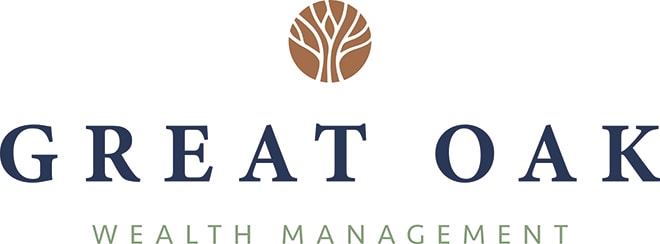A Savings Incentive Match Plan for Employees, or SIMPLE IRA, is a retirement plan specifically for small business owners. The SIMPLE IRA is a cost-effective, simple (duh) solution. It’s appealing for small business owners because it avoids the reporting requirements and is much less expensive than a 401(k), yet allows employee contributions, unlike a SEP IRA.
Small business owners have a much more difficult time saving for retirement. That’s a fact. Whether it’s inconsistent cash flow, employee turnover, or focusing on business growth, all too often, saving for retirement is allowed to fall by the wayside. It shouldn’t have to be that way.
A SIMPLE IRA may be the answer. Easy to set up and maintain, with a comparatively small financial commitment, a SIMPLE IRA checks off all the boxes for many small businesses.
SIMPLE IRA Employer Requirements
The first step is determining if your business can meet the requirements to offer a SIMPLE IRA plan.
- Employee limit: Employers must have 100 employees or less.
- Employee eligibility: The employer has options.
- Full Eligibility: All employees are eligible, regardless of income
- Limited Eligibility: The employer can choose an income limit between $0 and $5,0000. Any employee who has received at least that amount during two preceding calendar years and expects to receive at least that much in the current year can participate.
- Employer matching contributions: Employers must make matching contributions each year. However, they do have choices.
- Elective Match: Employers must match each employee’s salary reduction contributions on a dollar-for-dollar basis up to 3% of the employee’s compensation. However, there is another limited matching option. An employer can make an elective matching contribution of less than 3%, but it must be at least 1% for no more than two calendar years out of the five years ending with the year the reduction takes place.
- Alternative Non-elective Match: The employer can instead contribute 2% of wages, regardless of whether a worker participates in the SIMPLE IRA plan.
SIMPLE IRA plans can be set up between January 1 and October 1, provided you did not previously maintain a SIMPLE IRA plan. The exception is if it’s a new business created after October 1.
If your business grows beyond 100 employees, you have two years to keep the SIMPLE IRA plan before it is no longer eligible.
SIMPLE IRA Employee provisions
Employee Contributions: For 2024, the SIMPLE IRA contribution limits are $16,000, or $19,500 for those 50+.
Employees cannot max out a SIMPLE IRA and another employer-sponsored retirement plan, like a 401(k). The total annual contributions allowed for an employer retirement plan such as a SIMPLE IRA or 401(k) can’t be more than $23,000 in 2024 or $30,500 if 50 or older.
Beginning in 2023, employees will have the option to open a SIMPLE Roth IRA. Employees can now defer income on an after-tax basis. Employer matching still gets deposited to the SIMPLE IRA.
Since an employer cannot offer a 401(k) and a SIMPLE IRA, this would only occur if the employee changed employers or the employer changed plans mid-year.
Withdrawal Rules
You can roll over a SIMPLE IRA account into another SIMPLE IRA anytime without incurring taxes or penalties. Like other tax-deferred retirement plans, income taxes are due when you withdraw.
Withdrawals made before age 59 ½ are subject to a 10% penalty and the typical income taxes. Please note, if you make a withdrawal or roll the SIMPLE IRA over to a Traditional IRA or other types of employer-sponsored plans within two years of when you started contributing to the SIMPLE IRA, the penalty is increased to 25%
There are several qualified exemptions to avoid the early withdrawal penalty. Exemptions include unreimbursed medical expenses, qualified higher education expenses, or a first home purchase, to name a few.
SIMPLE IRA Advantages
Help employees: The SIMPLE IRA allows employees to save for retirement with a company match! Contributions reduce their taxable income, providing a tax benefit while at the same time growing tax-deferred.
Tax credit for employers: SECURE 2.0 expands the annual tax credit available to employers with up to 100 employees for the first three years of a new SIMPLE plan. Employers with no more than 50 employees will receive a credit equal to 100% of startup costs, up to $5,000, for the first three years of a plan—an additional credit offsets up to $1,000 of employer contributions per employee in the first year. The percentage declines from 100% in the first and second years to 75% in the third year, 50% in the fourth year, and 25% in the fifth year. The additional credit is phased out for employers with over 50 employees (2% per employee over 50). No contribution credit is allowed for any employee whose compensation for the year of the contribution exceeds $100,000, indexed to inflation.
Minimal annual requirements: The SIMPLE IRA’s beauty is its ease and cost-effectiveness. Less costly than a 401k and without the cumbersome paperwork, the SIMPLE IRA is the perfect retirement plan for many small employers.
A few annual requirements for operating the SIMPLE IRA plan include employee notifications. However, they can be done quickly by the employer, advisor, or custodian. Visit the IRS SIMPLE IRA page for more info.
SIMPLE IRA Disadvantages
Lower Contribution limits: As previously mentioned, the SIMPLE IRA’s contribution limits in 2024 are $16,000, or $19,500 for participants aged 50+, less than a 401k contribution limit of $23,000 or $30,500 for people 50+.
No vesting of employer matching contributions. All money an employer deposits into your SIMPLE IRA is immediately vested. This kind of immediate vesting does not always happen with other employer-sponsored retirement plans. If you have a high employee turnover, this could pose a problem.
Is the SIMPLE IRA right for your business?
Even though we’ve covered the rules, requirements, advantages, and disadvantages, when the rubber hits the road, when is a SIMPLE IRA plan right for you and your business? There are several variables you have to consider.
- The financial strength of the business
- Retirement savings goals of the owner
- The number of employees & employee turnover
- Tax benefits and costs
The financial strength of the business
Remember, you must provide participants with one of the required matching provisions. The matching requirements could become problematic if revenue is inconsistent or subject to prolonged downturns.
Instead, maybe a SEP-IRA is the answer. The employer contributions are optional and not required. However, in years when there are contributions, all employees and the business owner must receive the same percentage of salary contribution, any ratio up to 25%, or $61,000, whichever is less. The critical difference in a SEP IRA is that employees are not allowed to make contributions. It’s only funded with employer contributions.
What are your retirement savings goals?
How much do you want to save for yourself? How much do you want to help your employees? Remember, what you save for your employees applies to your own retirement savings. The SIMPLE IRA contribution limits may not be as beneficial to the owner due to the lower contribution limits compared to a 401k.
If you want to save more for yourself and a few highly-paid employees, you’ll want to consider a 401k.
The number of employees & employee turnover
When the only employees are yourself or your spouse, having a Solo 401(k) with a higher contribution limit, matching, and a Roth 401k option may be more advantageous.
More analysis is required when employees other than yourself and your spouse enter the equation. How many employees? What is your employee turnover? Do you want to help them save for retirement? What is the average employee income?
Tax benefits and Costs
In addition to the tax credit employers can receive when setting up a retirement plan, owners contributing to their retirement reduce their taxable income. Also, remember when contributing to a SIMPLE IRA, the company matching is deducted as an expense.
Then, finally, since you are running a business, cost, of course, is a factor. 401k’s can get pricey due to the compliance requirements. While SIMPLE IRAs are much less costly than a 401k, they could become time-consuming with many employees or high employee turnover.
Analyze the cost-benefit
There isn’t a single formula to determine if a SIMPLE IRA Plan is right for your business. A business owner must weigh all factors to determine if the SIMPLE IRA is in their business’s retirement savings sweet spot.
If you know any small business owners who want to save for retirement, feel free to share it with them. You can do this easily via any of the share buttons below.








